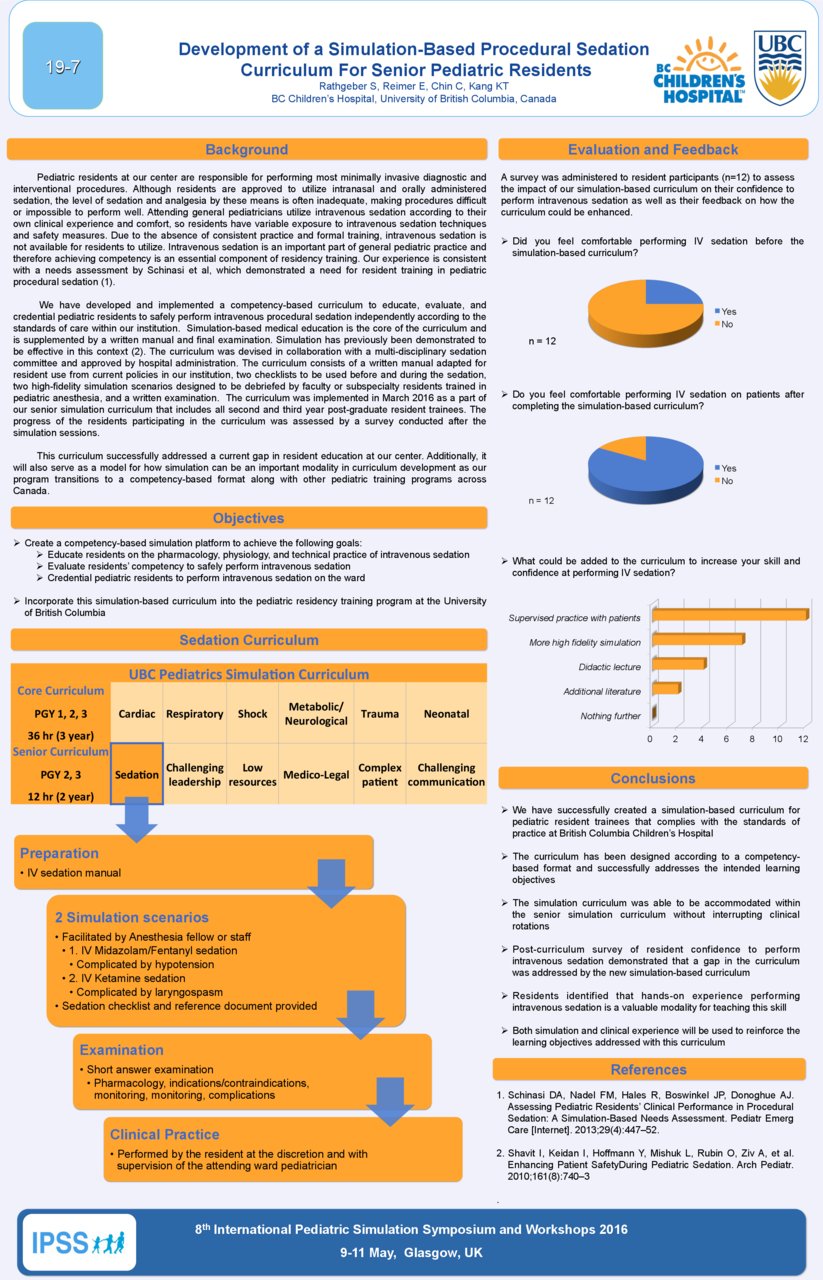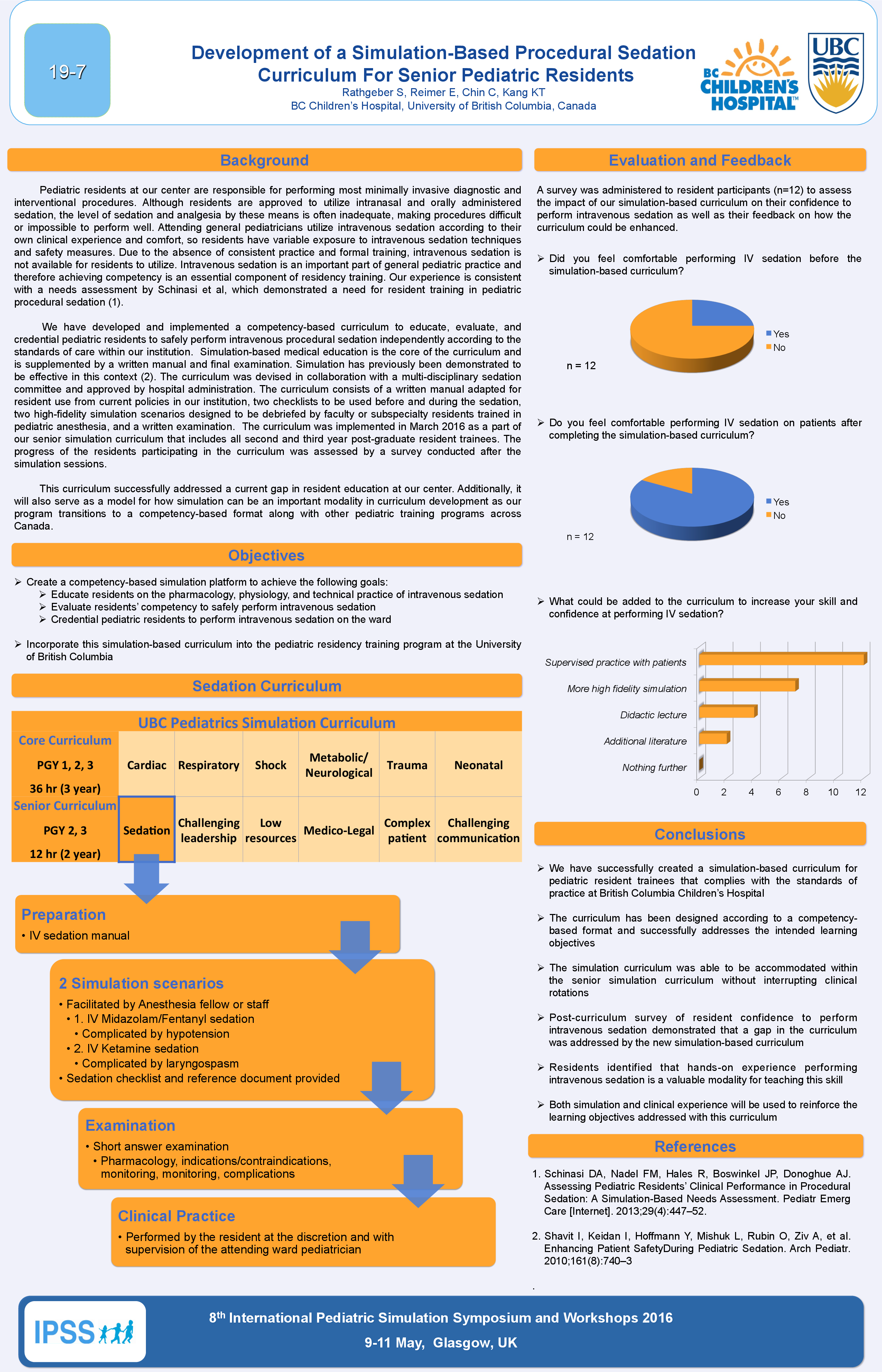Abstract
Pediatric residents at our center are responsible for performing most minimally invasive diagnostic and interventional procedures. Although residents are approved to utilize intranasal and orally administered sedation, the level of sedation and analgesia by these means is often inadequate, making procedures difficult or impossible to perform well. Attending general pediatricians utilize intravenous sedation according to their own clinical experience and comfort, so residents have variable exposure to intravenous sedation techniques and safety measures. Due to the absence of consistent practice and formal training, intravenous sedation is not available for residents to utilize. Intravenous sedation is an important part of general pediatric practice and therefore achieving competency is an essential component of residency training. Our experience is consistent with a needs assessment by Schinasi et al, which demonstrated a need for resident training in pediatric procedural sedation (1).
We have developed and implemented a competency-based curriculum to educate, evaluate, and credential pediatric residents to safely perform intravenous procedural sedation independently according to the standards of care within our institution. Simulation-based medical education is the core of the curriculum and is supplemented by a written manual and final examination. Simulation has previously been demonstrated to be effective in this context (2). The curriculum was devised in collaboration with a multi-disciplinary sedation committee and approved by hospital administration. The curriculum consists of a written manual adapted for resident use from current policies in our institution, two checklists to be used before and during the sedation, two high-fidelity simulation scenarios designed to be debriefed by faculty or subspecialty residents trained in pediatric anesthesia, and a written examination.
The curriculum was implemented in March 2016 as a part of our senior simulation curriculum that includes all second and third year post-graduate resident trainees. The progress of the residents participating in the curriculum was assessed by a survey conducted after the simulation sessions. This curriculum successfully addressed a gap in resident education at our center. Additionally, it will also serve as a model for how simulation can be a key modality in curriculum development as our program transitions to a competency-based format along with other Canadian pediatric programs.






